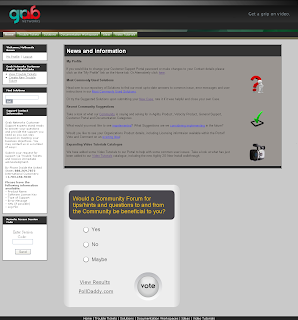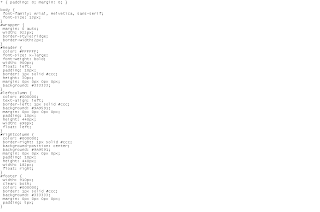I come fresh and excited from the Salesforce Winter 11 release webinar with news of the latest and greatest to hit our Salesforce shelves (metaphorically speaking of course).
I waxed a little in an early post of what seemed to be making its way to us based on a little insight and the Ideasexchange "Next Release" category. Well I was blown away by how far the release has come and what will eventually be delivered. By the way you can find out when the release will hit you at trust.salesforce.com.
The full release can be found in the Winter 11 release notes PDF found here. For a snippet here is what you can find in an Oscars style top 5 lineup in reverse order.
5. The Force.com Platform App Login and Security developer upgrade highlights
- SFDC can now act as an Identity provider for Oauth authentication
- Many governors removed or increased
- Cloud based log viewer (More like the Eclipse IDE experience)
- Pilot program for REST API (Submit a SFDC Case for access to this Pilot)
- Single Sign-On (Login to Salesforce and non-Salesforce Apps)
4. Other Developer related User Interface enhancements
- Setup gets a makeover with same skin release we have all come to love ;)
- Global Search gets the addition of searching for Content
- Some enhancements for Visualforce including a View State Inspector allowing you to debug a page
3. Force.com Sites upgrades
- Website URL redirects
- Self-Registration for Person Accounts
- Customizable "My Profile" page
2. Salesforce Database
- New Report Builder (we love to drag and drop!)
- Chatter analytics (now you can build Reports and Dashboards around Chatter)
1. It's all about Chatter and the Collaboration Platform
This releases Oscar gets picked up by Chatter
- Chatter Files - Store, update, and share your Chatter files in one place
- Chatter Search - Search across every Chatter feed, file, profile, and update
- Chatter Recommendations - Smart recommendations to help you collaborate with the right colleagues
- Chatter Filters - Find targeted information fast
- Chatter Email Manager - Tailor your Chatter email settings to receive only the information you need
- Chatter Email Digest - Get the latest updates from your Chatter feed so you never miss a thing
- Chatter Topics - Use hashtags in posts to create shared topics
- Activity Chatter - Collaborate on tasks and events
So that's it folks! If you would like to check out the Webinar Jeff Grosse (@CRMFYI) has placed them on his website the Salesforce Channel. What do you think about this next release? We would love to hear you thoughts.










